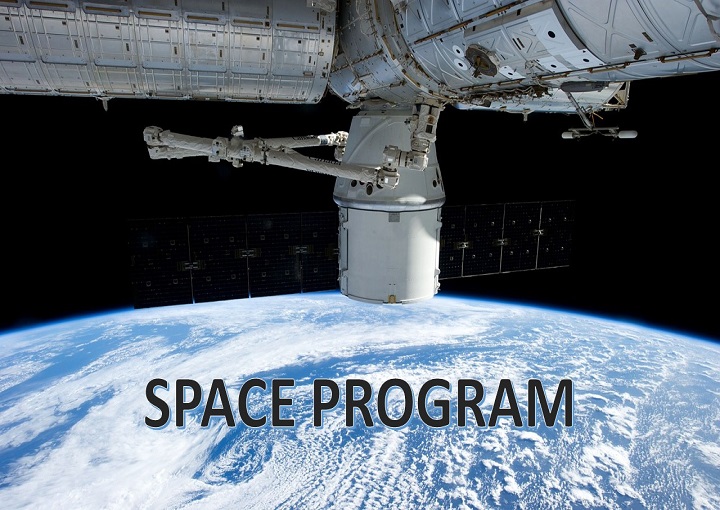Delve into the captivating world of space exploration and the complex engineering challenges faced by space programs. Our in-depth article explores the formidable obstacles encountered in designing and constructing spacecraft, launching rockets, and sustaining human life in space. Discover how engineers overcome these challenges, from developing advanced propulsion systems to creating reliable life support systems. Whether you’re a space enthusiast, an aspiring engineer, or simply curious about the wonders of space technology, this article offers valuable insights into the incredible engineering feats behind successful space programs.
Introduction
The exploration of space has always fascinated and inspired humanity. Space programs have been at the forefront of expanding our knowledge and pushing the boundaries of what is possible. However, behind every successful space mission lies a multitude of engineering challenges that must be overcome. In this article, we will explore the various engineering challenges faced by space programs and how they are tackled.
History of Space Programs
Before delving into the engineering challenges, it is important to understand the history of space programs. The journey of human space exploration began with the momentous launch of Sputnik 1 by the Soviet Union in 1957. Since then, several countries, including the United States, Russia, China, and others, have developed their own space programs, each contributing significant advancements to the field.
Engineering Challenges in Space Programs
Launch Vehicles and Propulsion Systems
One of the primary engineering challenges in space programs revolves around the development of efficient launch vehicles and propulsion systems. Launching payloads into space requires an incredible amount of thrust and precise calculations to achieve the desired orbit. Engineers constantly strive to optimize fuel efficiency, reduce costs, and enhance the reliability of these systems to ensure successful missions.
Life Support Systems
When humans venture into space, their safety and well-being become paramount. Life support systems are designed to provide astronauts with the necessary resources, such as oxygen, water, and waste management facilities, in the harsh environment of space. These systems need to be highly reliable, efficient, and capable of sustaining human life for extended durations, ensuring the health and survival of astronauts.
Communication and Navigation
Effective communication and precise navigation are vital for the success of space missions. Engineers face the challenge of establishing reliable communication links between spacecraft and ground control, enabling the exchange of critical information and commands. Additionally, advanced navigation systems are essential for spacecraft to accurately reach their intended destinations, maneuver, and conduct scientific observations.
Thermal Management
Space is an extreme environment with temperature fluctuations ranging from extreme cold to intense heat. Managing thermal conditions within a spacecraft is crucial to protect sensitive electronic equipment and ensure the survival of crew members. Engineers develop advanced thermal control systems using insulation, radiators, and heat pipes to regulate temperatures effectively and prevent equipment malfunctions.
Radiation Protection
Beyond the protective atmosphere of Earth, astronauts are exposed to high levels of radiation from cosmic rays and solar events. Shielding astronauts from these harmful radiations is a significant engineering challenge. Engineers employ advanced materials and design techniques to create effective radiation protection systems for both manned and unmanned missions, safeguarding the health and well-being of astronauts.
Materials and Structures
Spacecraft and space stations must withstand extreme conditions, including intense vibrations during launch, microgravity environments, and temperature variations. Engineers work on developing lightweight yet robust materials and innovative structural designs that can withstand these demanding conditions. The materials used need to be durable, resistant to corrosion, and able to maintain structural integrity throughout the mission.
Robotics and Automation
Robotic systems and automation play a crucial role in space exploration. They are employed for tasks such as satellite deployment, repair and maintenance, sample collection, and the exploration of distant celestial bodies. Engineers focus on creating intelligent and autonomous robotic systems that can perform complex tasks with precision and reliability. These systems are designed to enhance the capabilities of space missions, minimize human risk, and gather valuable data from remote or hazardous environments.
Future Prospects and Innovations
As technology continues to advance, the future of space programs holds exciting prospects and innovations. Here are some areas that researchers and engineers are actively exploring:
Reusable Launch Vehicles:
The development of reusable launch vehicles aims to significantly reduce the cost of space missions by enabling multiple launches with the same vehicle. This breakthrough technology has the potential to revolutionize the accessibility and affordability of space exploration.
Human Missions to Mars:
Sending humans to Mars is a long-term goal for many space agencies and private companies. Engineers are currently working on spacecraft and habitats that can support human life during the long-duration journey and the challenging conditions on the Red Planet.
Advanced Propulsion Systems:
Research is ongoing to develop advanced propulsion systems that can enable faster and more efficient travel through space. Concepts like ion propulsion, nuclear propulsion, and even the possibility of harnessing antimatter are being explored to revolutionize deep space missions.
In-Situ Resource Utilization:
In order to sustain long-duration missions and potential colonization efforts, utilizing resources available on celestial bodies becomes crucial. Engineers are investigating ways to extract and utilize resources like water ice, minerals, and gases found on the Moon, Mars, and other celestial bodies.
Space Tourism:
With the emergence of commercial space companies, space tourism is becoming a reality. Engineers are designing spacecraft that can safely transport paying passengers to experience the wonders of space, opening up new opportunities for human exploration and economic growth.
Conclusion
Space programs face numerous engineering challenges in their quest to explore and understand the universe. From developing efficient launch vehicles and propulsion systems to ensuring the safety and well-being of astronauts, engineers play a crucial role in overcoming these challenges. As technology advances, future prospects for space programs look promising, with innovations such as reusable launch vehicles, human missions to Mars, advanced propulsion systems, in-situ resource utilization, and the rise of space tourism. These endeavors will continue to push the boundaries of human knowledge and inspire generations to dream of what lies beyond our home planet.
FAQs
1. How do engineers tackle the challenges of launching payloads into space?
Ans. Engineers optimize fuel efficiency, reduce costs, and enhance reliability through the development of efficient launch vehicles and propulsion systems. Precise calculations and extensive testing are conducted to ensure successful missions.
2. What are some key considerations in designing life support systems for space missions?
Ans. Key considerations include providing astronauts with oxygen, water, and waste management facilities, ensuring reliability and efficiency, and sustaining human life for extended durations in the harsh environment of space.
3. How do engineers protect astronauts from radiation in space?
Ans. Engineers employ advanced materials and design techniques to create effective radiation protection systems. These systems shield astronauts from cosmic rays and solar events, safeguarding their health and well-being.
4. What are some future innovations in space programs?
Ans. Future innovations include reusable launch vehicles, human missions to Mars, advanced propulsion systems, in-situ resource utilization, and the emergence of space tourism.
5. How does robotics and automation contribute to space exploration?
Ans. Robotics and automation play a crucial role in tasks such as satellite deployment, repair and maintenance, sample collection, and the exploration of distant celestial bodies. They enhance mission capabilities, minimize human risk, and gather valuable data from challenging environments.

